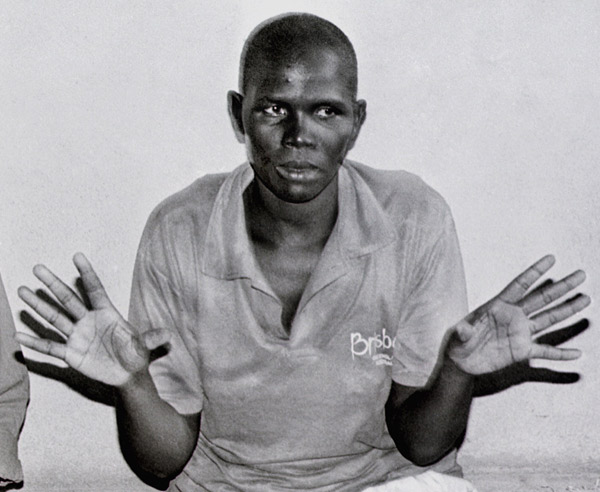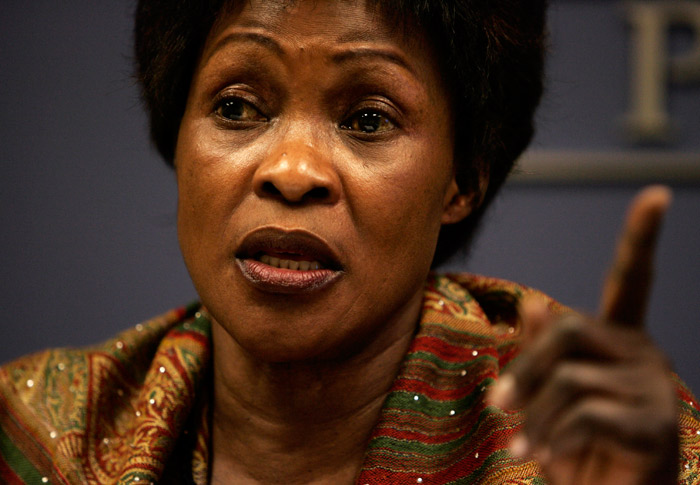Spirits in Uganda
Alice Lakwena and Betty Bigombe Shape Uganda’s Past and Future
In many parts of the world today, women face challenges to their basic freedoms from fundamentalist movements. It is often assumed that men incite and lead these movements, but this is not always true. In Uganda, one woman, Alice Auma, gave rise to what is now the Lord's Resistance Army, a self-proclaimed Christian guerilla group responsible for one of Africa's longest-standing conflicts. Since 1987, the LRA has sought to overthrow the government and establish a theocratic state based on the Ten Commandments.
For two decades, another woman from the same tribe as Auma, Betty Bigombe, has been at the forefront of peace negotiations between the LRA and the Ugandan government. Can one woman quell what another woman has instigated?
Since Uganda gained independence from the British in 1962, it has been marred by a series of coups and counter-coups. Authoritarian, military rule has been the norm.
In an effort to curb longstanding sectarian violence, many cornerstones of democracy, including free organizing and the right of political parties to participate in fair elections, were suspended in the 1980s. Yoweri Museveni, Uganda's current president, has held power since 1986. His term has been plagued by external and internal threats, including unrelenting violence by the Lord's Resistance Army.
Possession and Power
Alice Auma belonged to the Acholi tribe of Northern Uganda. Far from being a military leader, she was traditional spiritual healer and medium. But on August 6, 1986, Alice channeled someone new: the spirit of a deceased Italian military officer named "Lakwena." He told her to create a rebel group to fight the evil and bloodshed perpetrated by Museveni's government forces. From then on, Auma was known as Alice Lakwena. She called her group the Holy Spirit Movement. (HSM)
Alice Lakwena's channeling came in the midst of a profound spiritual crisis amongst the Northern Acholi and the threat of annihilation posed by the occupying Southern Ugandan forces.
Three months later, Alice added to her small group of followers by convincing an allied army to put some of their troops under her command. Within weeks, the new alliance achieved two unexpected victories over opposition forces. These victories garnered widespread popular support and attracted new recruits to the HSM.
Unusual Tactics
Although the Holy Spirit Movement acted like other armies, it also had practices that outsiders found unusual. Spiritual "controllers" were integrated into each unit. Along with duties such as tending to Alice while she was possessed, they smeared blessed oil on combatants, supposedly making them bulletproof, as long as their souls were pure.
Moreover, soldiers carried stones that had been likewise blessed, now said to possess the power of grenades. Combatants walked into battle in cross-shaped formations while swaying, shaking and singing hymns.
Initially, the HSM was effective while fighting smaller battles in Northern Uganda. But as the army moved south towards the capital city of Kampala, they suffered a number of horrific defeats, with thousands massacred. Opposition soldiers used machine guns to fire upon the hymn-singing formations walking towards them.
From Holy Spirit to the Lord's Army
In 1987, it was reported that Lakwena's spirit left Alice's body. Fearing capture, she fled to Kenya on a bicycle. There she was imprisoned, only later to be released and placed in a refugee camp, where she died of an unidentified illness in January of 2007.
The Holy Spirit Movement left in its wake a number of smaller rebel groups that mimicked its religious message: that Jesus will reign on earth for 1,000 years. One of these groups emerged as The Lord's Resistance Army.
Today, much of the LRA's ranks are filled by children -- 25,000 and counting -- kidnapped and forced to commit brutal acts of violence including abduction, mutilation, rape and torture.
Betty Bigombe
Now, Uganda's major hope in curbing the violence lies with Betty Bigombe, also a native Acholi.
In 1988, when over one-third of Uganda's population was involved in conflict, Betty Bigombe was appointed Minister of State. Her job: to find peaceful means of ending the violence. She moved to the affected area, speaking directly with people in displaced persons camps.
"I needed to listen," she said in an interview with the United States Institute of Peace. "Because when people pick up weapons to go and fight, they know it's dangerous. So there must be some reason why they do so. If I could get to know why they were fighting, then it would make a good start as to how we could bring a peaceful solution to the conflict."
Conflicts Run Deep
Bigombe traces the roots of the conflict to colonial times. The British divided the country into regions, with corresponding populations encouraged towards specific occupations. Those in Southern Uganda were trained to be civil servants, while those in the North, including the Acholi, were singled out as most suitable for the military. When Museveni came into power, Northerners lost their jobs and rebelled to regain their glory.
Bigombe asserts that leaders have exploited these divisions to gain and remain in power. While Museveni has long pressed her to goad LRA leaders into surrender, she has consistently maintained that Acholi grievances need to be addressed to ensure sustainable peace. To this day, Bigombe remains one of the few ever to have negotiated with LRA leadership directly.
Recently, government officials in Sudan have taken over the peace talks, and they consult Bigombe as an advisor. Now, she hopes, "I want the war to end. I want people to be able to live a normal, decent life."



